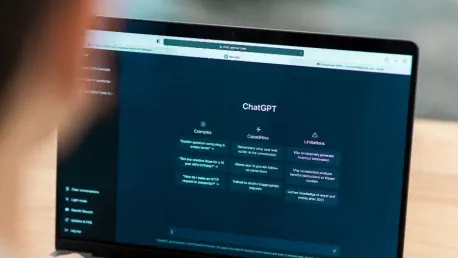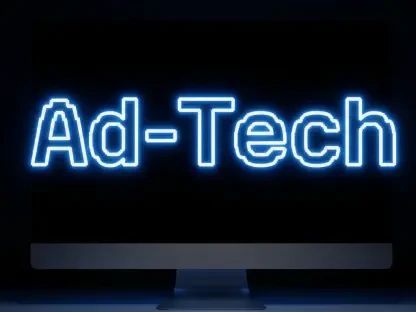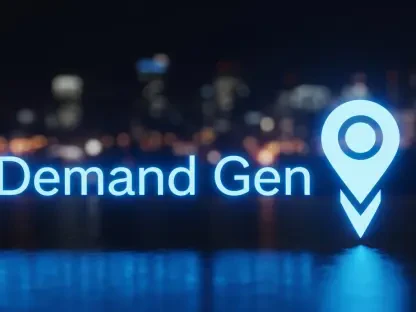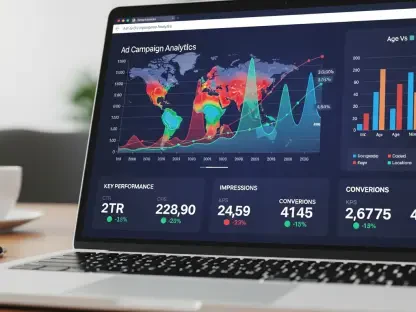If you’re a user of the GA4 version of Google Analytics and have explored the capabilities of ChatGPT or similar generative AI tools, you might be wondering how to combine both for better results. Andy Crestodina, co-founder and CMO of Orbit Media Studios, has the answer. During his presentation at the Marketing Analytics & Data Science (MADS) conference titled “How to Audit Your Content Using GA4: A Data-Driven Approach to SEO and Lead Generation,” Crestodina demonstrated how the integration of GA4 and ChatGPT can enhance content performance evaluation and lead generation.
1. Which content has rising and falling search traffic?
To monitor the content that has increasing or decreasing search traffic, start by analyzing organic search traffic in GA4:
- Navigate to the Engagement section in the left column and select the report “Pages and screens: Page title and screen class.”
- Click on “Add filter” to focus on organic traffic.
To build the filter:
- In the Include dropdown, choose Session medium.
- Under Dimension values, select organic.
At the top of the page, click on “Add comparison.” Choose a time range, such as the last seven or 28 days, and activate the Compare toggle. This will generate a report that identifies rising and falling search traffic more accurately, thanks to GA4’s ability to match the days of the week in date comparisons.
For instance, the URL — /blog/how-to-write-testimonials-examples — experienced a 43.43% drop in views from Jan. 7 through Feb. 3, 2023, compared to the previous period. Conversely, the URL — /blog/website-navigation — saw a 42.86% rise during the same timeframe.
To improve content with falling search traffic, consider:
- Making the content more compelling to boost dwell time.
- Adding visuals like graphics or videos.
- Including quotes from subject matter experts.
- Providing supportive evidence such as data or examples.
- Introducing formatting like subheads and bullets.
- Enhancing the depth and detail of the content.
2. What phrases does this article rank for?
Understanding the keywords that drive traffic to an article can help optimize it further. First, generate a report from Google Search Console:
- Search type: Web.
- Date: Specify a timeframe (e.g., the last three months).
- Query: -orbit (to exclude branded queries for Orbit Media).
- Page: Input the specific page URL.
Export the data as a CSV file and upload it to ChatGPT. Andy uses ChatGPT Plus, which supports data analysis and file uploads. He begins with this prompt: “I’m giving you Google Search Console data showing the search performance of a URL. Can you analyze?”
ChatGPT processes the data and suggests various analyses, such as identifying the queries generating the most clicks. For more comprehensive analysis, Andy prompts ChatGPT to merge similar queries, providing a consolidated list of keyphrases and their corresponding metrics.
Once the keyphrases are identified, paste the content into ChatGPT with a prompt to evaluate keyword usage and frequency based on the dataset. ChatGPT outlines steps including text preprocessing, keyphrase extraction, frequency count, and evaluation. Andy then refines the prompt to generate actionable recommendations for improving the content’s keyword relevance and clarity.
3. What content edits can improve rankings?
ChatGPT’s suggested changes can significantly enhance content relevance and engagement. For example:
Introduction: Change “Social media streams are crowded, fast-flowing, and very competitive. As social networks pull back on organic reach, showing up is hard, and getting attention is even harder.”To “Navigating the crowded and competitive social media video landscape can be daunting. With platforms like Facebook and Instagram curtailing organic reach, the challenge of making your DIY social media videos visible is greater than ever.”
Second section: Winning the algorithm: Change “Social media videos are so engaging that the networks are pushing them way to the top of social streams. Facebook, Instagram, and LinkedIn all want us to do more in this all-powerful format. It wins in the algorithms and it wins for attention.”To “The power of creating engaging social media videos is so compelling that platforms like Facebook, Instagram, and LinkedIn are giving them preferential treatment. This is why learning how to create captivating social media video content is crucial—it wins both in algorithms and in capturing audience attention.”
4. Which articles convert email subscribers the best?
To determine which articles convert the most email subscribers, Andy collects data from GA4 and ActiveCampaign. He starts by analyzing blog performance in GA4 under the “Page and screens: Page path + query string” report, customizing it to include sessions, users, and conversions. He then adds a filter to focus on blog pages.
After downloading the data as a CSV file, Andy gathers a second CSV file focusing on the email signup thank you page data and its referring pages. After feeding this data into ChatGPT, he prompts it to merge the datasets, resulting in a consolidated view of blog performance and conversions.
By visualizing conversion rates, Andy identifies top-performing content for email subscriptions and implements strategies like featuring these articles on the homepage and incorporating them into social media marketing plans.
5. Which email campaigns perform the best?
To evaluate email campaign performance, Andy combines GA4 data with ActiveCampaign metrics. He collects session data related to email campaigns within GA4’s traffic acquisition report and exports it as a CSV file. He then matches this with ActiveCampaign data containing open rates, click-through rates, and other engagement metrics.
After merging the datasets using ChatGPT, Andy prompts it to analyze campaign performance, gaining insights into engagement with analytics, content marketing, and SEO topics. ChatGPT’s analysis helps Andy refine email marketing strategies, focusing on topics with high engagement and revisiting underperforming campaigns.
Next Steps
If you’re using the GA4 version of Google Analytics and have explored ChatGPT or similar generative AI tools, you might be curious about combining them for optimal results. Andy Crestodina, the co-founder and Chief Marketing Officer of Orbit Media Studios, offers valuable insights on this integration. At the Marketing Analytics & Data Science (MADS) conference, Crestodina gave a presentation titled “How to Audit Your Content Using GA4: A Data-Driven Approach to SEO and Lead Generation.” In it, he explained how using GA4 along with ChatGPT can significantly improve your content performance analysis and lead generation efforts. By integrating GA4’s robust data analytics capabilities with ChatGPT’s advanced language processing, marketers can deepen their understanding of user behavior and enhance their content strategy. This combined approach enables a more nuanced, data-driven evaluation of content effectiveness, leading to improved SEO and better lead generation outcomes.









